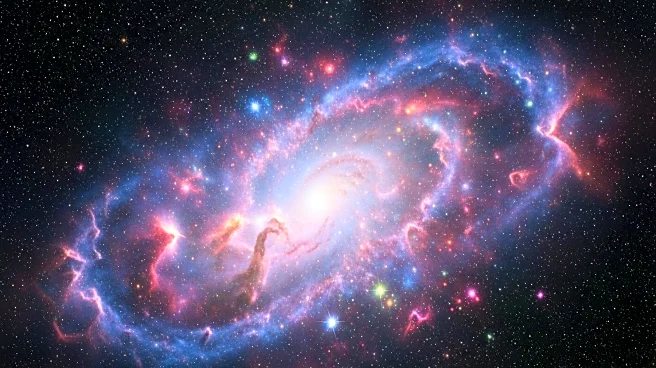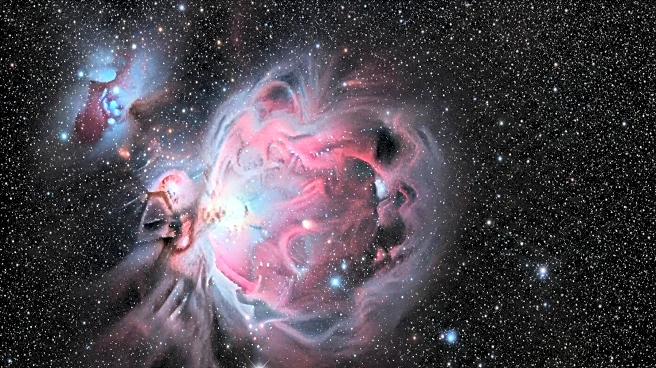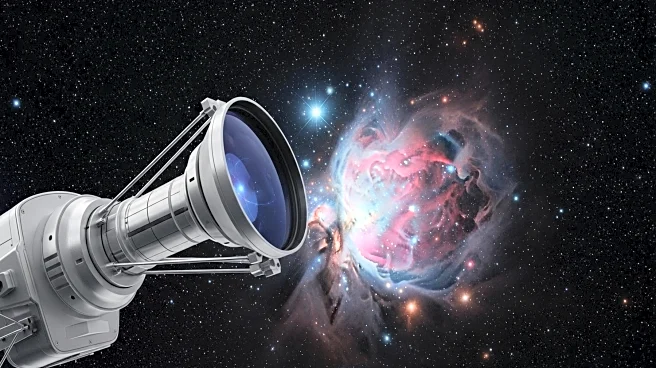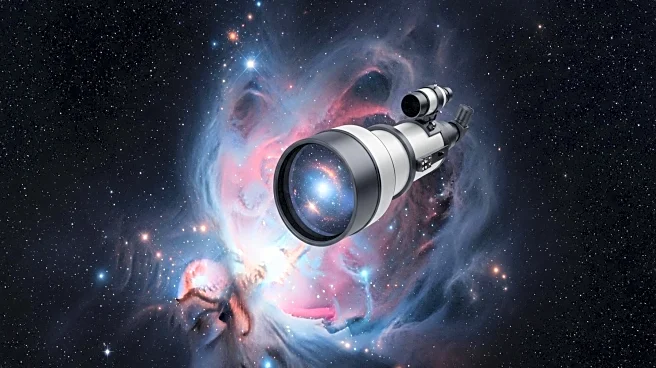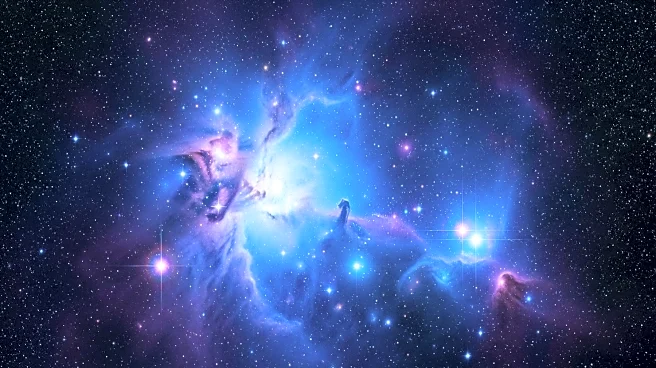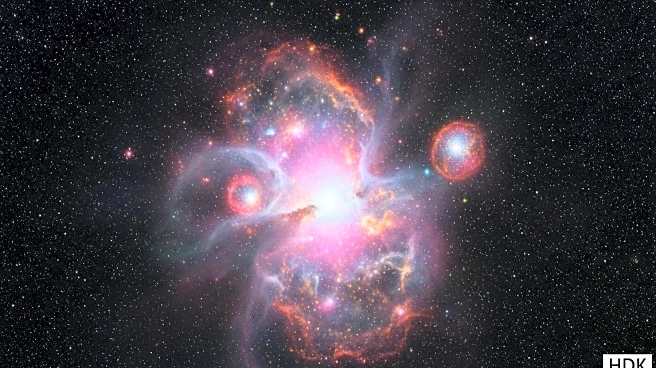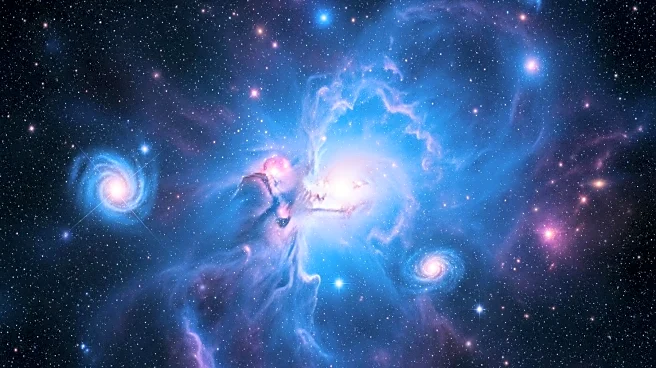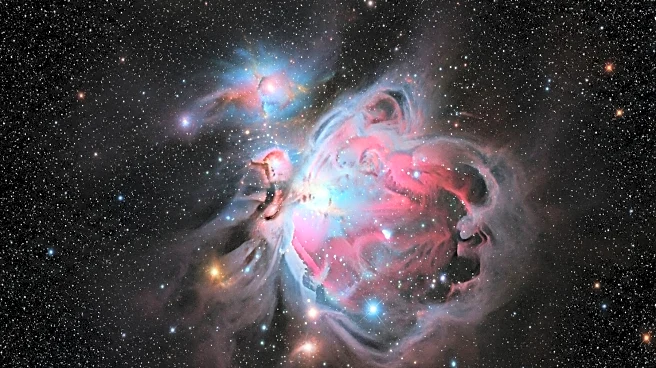What's Happening?
The James Webb Space Telescope (JWST) has captured a detailed image of Sagittarius B2, the most massive star-forming region in the Milky Way, located near the galactic center. Using its mid-infrared camera, MIRI, Webb revealed glowing dust heated by young stars and dense regions where future stars will form. The image provides unprecedented detail, helping astronomers understand the mysteries of massive star formation. Sagittarius B2, despite containing only 10% of the gas in the galactic center, produces half of the region's new stars, a phenomenon scientists aim to explore further.
Why It's Important?
The detailed observations from the JWST offer significant insights into star formation processes, which are crucial for understanding the evolution of galaxies. By studying regions like Sagittarius B2, scientists can learn why some areas are more active in star formation than others. This knowledge can impact theories about galaxy development and the lifecycle of stars, potentially leading to advancements in astrophysics and cosmology. The findings also underscore the capabilities of the JWST in providing high-resolution data that can solve longstanding astronomical mysteries.

